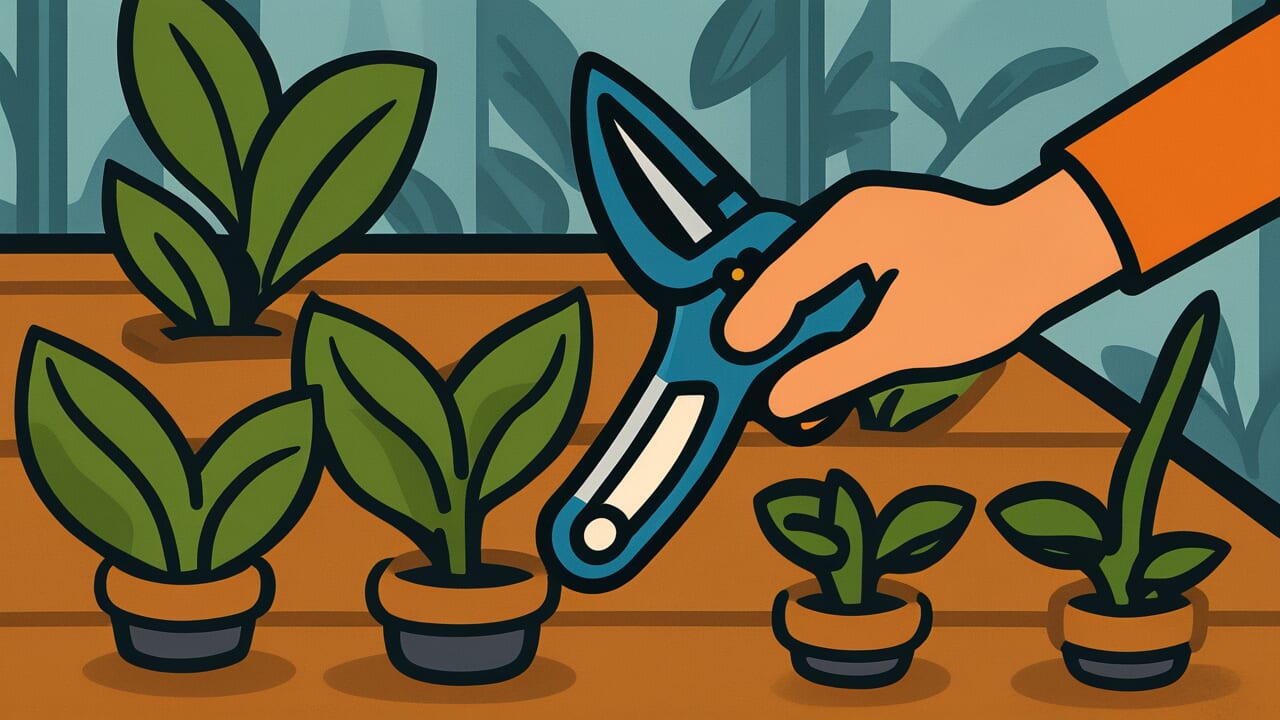How to Read “Nip it in the bud”
“Nip it in the bud”
[NIP it in the BUHD]
All words are common and easy to pronounce.
Meaning of “Nip it in the bud”
Simply put, this proverb means you should stop problems when they first appear, before they grow bigger and harder to handle.
The phrase comes from gardening. When you “nip” a bud, you pinch it off a plant. Gardeners do this to control how plants grow. They remove small buds before they become branches or flowers. This keeps the plant healthy and shaped the way they want.
In everyday life, we use this saying when small problems start to appear. Maybe a friend begins acting rude, or bills start piling up. The proverb suggests dealing with these issues right away. It’s much easier to fix a small problem than wait until it becomes huge.
People often realize this wisdom too late. They ignore warning signs and hope problems will disappear on their own. But most problems don’t vanish by themselves. Instead, they usually grow worse over time. A small argument can become a broken friendship. A tiny leak can flood a house.
Origin and Etymology
The exact origin of this phrase is unknown, but it clearly comes from gardening practices. Gardeners have been pinching off buds for thousands of years. The saying likely developed when people noticed this farming technique worked for life problems too.
During earlier centuries, most people lived on farms or had gardens. Everyone understood plant care and pruning techniques. Comparing life problems to unwanted plant growth made perfect sense. People could easily picture nipping off a small bud versus cutting down a full tree.
The phrase spread because it painted a clear picture. Anyone who had ever tended plants knew exactly what it meant. Over time, it moved from farming communities into general speech. Today, even people who have never gardened understand the comparison between stopping small buds and preventing big problems.
Interesting Facts
The word “nip” comes from old Germanic languages meaning “to pinch” or “squeeze.” It’s related to words in Dutch and German that describe the same quick pinching motion. The word “bud” comes from Middle English and originally meant any small swelling on a plant. Gardeners have used similar phrases across many languages, showing how universal this farming wisdom became.
Usage Examples
- Manager to supervisor: “The new employee keeps arriving late and making excuses – Nip it in the bud.”
- Parent to spouse: “Our teenager is starting to talk back and ignore curfew – Nip it in the bud.”
Universal Wisdom
This proverb reveals a fundamental truth about how problems grow and spread. Humans have always noticed that small issues rarely stay small. Whether it’s weeds in a garden, cracks in a wall, or tension between people, tiny problems have a natural tendency to expand.
Our brains are wired to avoid immediate discomfort, even when it prevents bigger pain later. This creates a dangerous pattern. We see early warning signs but tell ourselves they’re not serious yet. We postpone difficult conversations, ignore strange sounds in our car, or let small debts accumulate. This avoidance feels good in the moment but often leads to much larger problems.
The wisdom behind “nip it in the bud” recognizes that prevention requires less energy than cure. A gardener who removes one small bud saves the effort of cutting down an entire unwanted branch later. Similarly, addressing a problem when it first appears usually takes less time, money, and emotional energy than dealing with its fully grown consequences. Our ancestors understood that the best time to solve a problem is before it becomes overwhelming.
When AI Hears This
People consistently misjudge when problems deserve serious attention. We want our effort to match what we see right now. A small argument feels like it needs small effort. A tiny debt seems to deserve tiny concern. This creates a mental trap where current problem size tricks us into using current-sized solutions.
This happens because humans evolved to save energy for visible threats. Our brains automatically match response size to current danger levels. We feel foolish using big solutions on small problems. This made sense when resources were scarce and threats were immediate. But modern problems often grow invisibly before exploding into view.
What fascinates me is how this “mistake” actually protects humans from constant worry. If people treated every small issue like a major crisis, they would exhaust themselves quickly. The same mental shortcut that causes problems also prevents panic and overwhelm. Humans have found a way to stay functional while occasionally missing early warning signs.
Lessons for Today
Living with this wisdom means developing the courage to act on early warning signs. Most people can spot problems when they first appear. The challenge lies in taking action before the situation forces us to respond. This requires overcoming our natural tendency to hope problems will resolve themselves.
In relationships, this might mean having honest conversations when small irritations first arise. At work, it could involve addressing performance issues before they affect entire projects. With health, it means seeing doctors for minor symptoms rather than waiting for major illness. The key is recognizing that temporary discomfort now prevents much greater difficulty later.
The hardest part of this wisdom is that it requires acting when problems still seem manageable. It feels unnecessary to address something small. But people who master this approach often find their lives run more smoothly. They deal with fewer crises because they prevent most problems from reaching crisis level. While it takes practice to overcome the urge to wait and see, the long-term benefits make early action worthwhile.



Comments